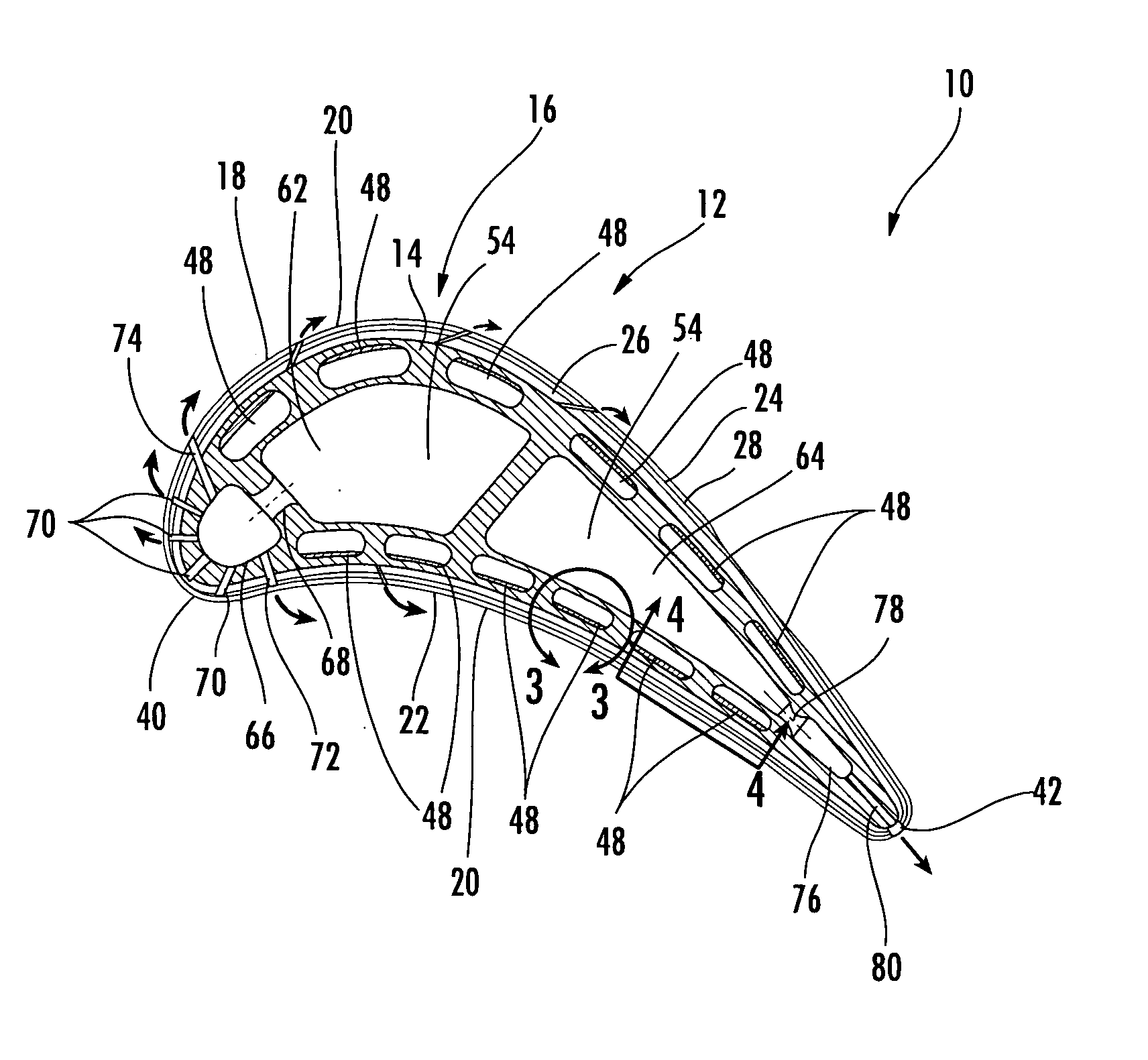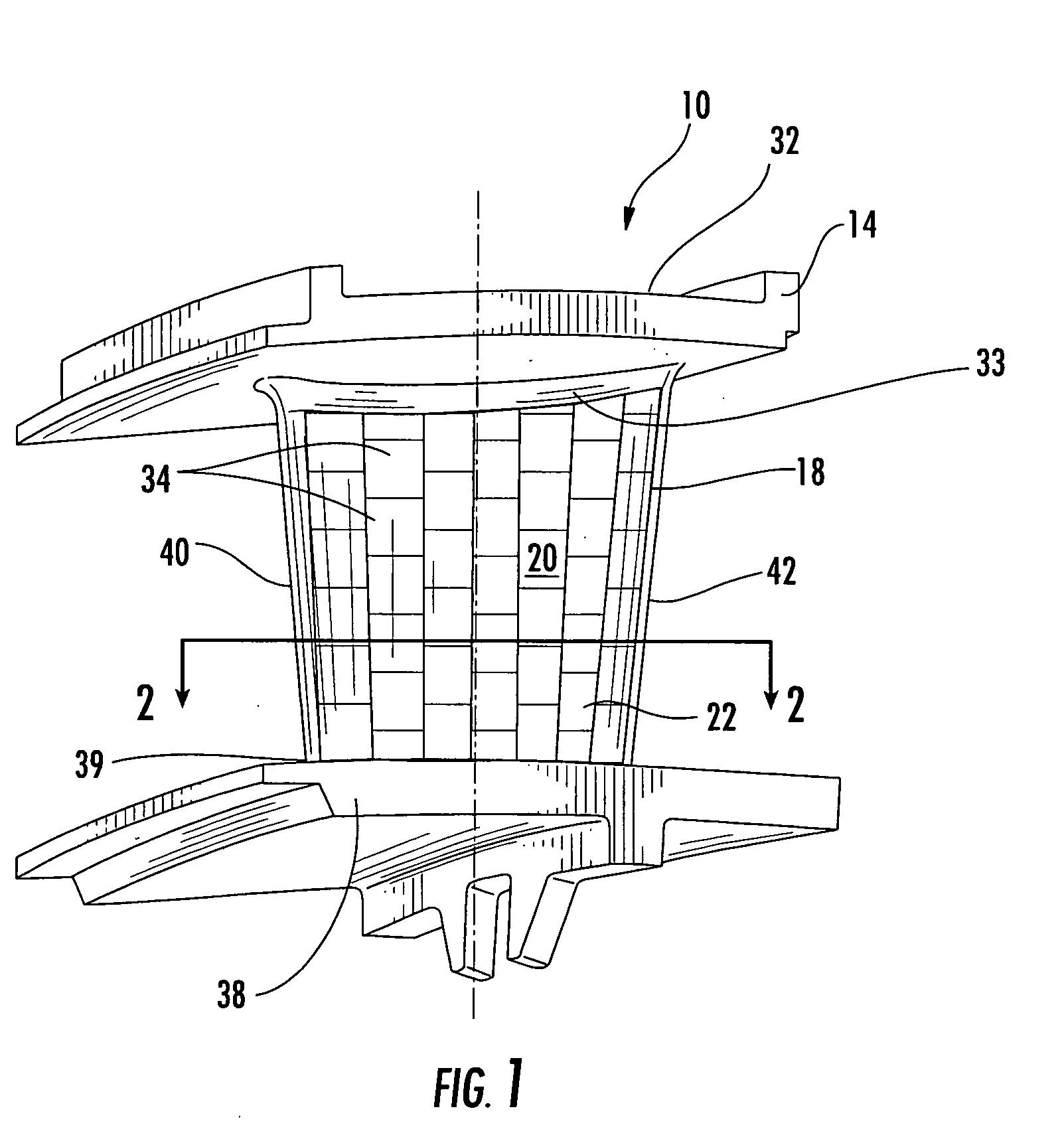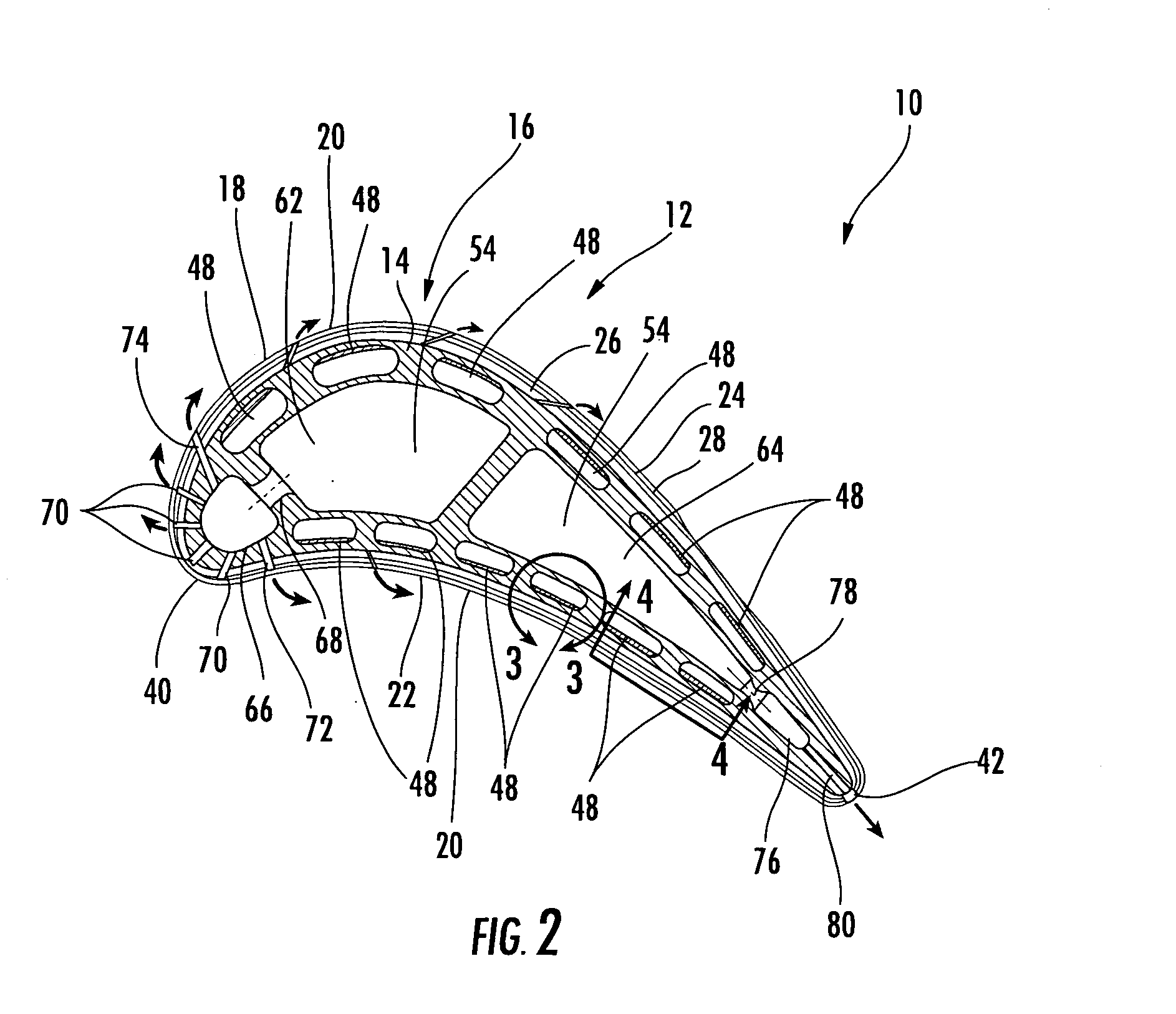Turbine airfoil with floating wall mechanism and multi-metering diffusion technique
a turbine airfoil and floating wall technology, applied in the field of turbine airfoils, can solve problems such as the likelihood of failure, and achieve the effects of reducing the velocity of cooling fluid, minimizing the velocity, and eliminating localized hot spots
- Summary
- Abstract
- Description
- Claims
- Application Information
AI Technical Summary
Benefits of technology
Problems solved by technology
Method used
Image
Examples
Embodiment Construction
[0019]As shown in FIGS. 1-4, this invention is directed to a turbine airfoil 10 having a cooling system 12 in inner aspects of the turbine airfoil 10 for use in turbine engines. The cooling system 12 may be used in any turbine vane or turbine blade. While the description below focuses on a cooling system 12 in a turbine vane 10, the cooling system 12 may also be adapted to be used in a turbine blade. The cooling system 12 may be configured such that adequate cooling occurs within an outer wall 14 of the turbine vane 10 by including one or more cavities 16 in the outer wall 14 and configuring each cavity 16 based on local external heat loads and airfoil gas side pressure distribution in both chordwise and spanwise directions. The chordwise direction is defined as extending between a leading edge 40 and a trailing edge 42 of the airfoil 10. The spanwise direction is defined as extending between an endwall 32 at a first end 33 and an inner endwall 38 at a second end 39.
[0020]As shown i...
PUM
| Property | Measurement | Unit |
|---|---|---|
| temperatures | aaaaa | aaaaa |
| OD | aaaaa | aaaaa |
| pressure | aaaaa | aaaaa |
Abstract
Description
Claims
Application Information
 Login to View More
Login to View More - R&D
- Intellectual Property
- Life Sciences
- Materials
- Tech Scout
- Unparalleled Data Quality
- Higher Quality Content
- 60% Fewer Hallucinations
Browse by: Latest US Patents, China's latest patents, Technical Efficacy Thesaurus, Application Domain, Technology Topic, Popular Technical Reports.
© 2025 PatSnap. All rights reserved.Legal|Privacy policy|Modern Slavery Act Transparency Statement|Sitemap|About US| Contact US: help@patsnap.com



